Who Is Anatoly Fomenko - Real World Cronology
Fomenko’s New Chronology
In recent years there has been a lot of information and misinformation spread on the internet about the Russian author Anatoly Fomenko and his alternative take on the historical narrative and timeline.
Fomenko’s work is presented in his 7 volume series entitled History: Fiction or Science?.
This voluminous work has become somewhat of an impenetrable tome for the internet meme addicts of the world. For some this has led people on a road of misunderstanding of the concept as a whole and pushing various theories about free energy buildings that are based on “Tartarian architecture“. In their world revival architecture doesn’t exist, everything is fake, and the entire historical narrative that is put forward by Fomenko goes on ignored while armchair detectives put forward these more absurd and weird theories writing about Tartaria as if it’s some collective fan fiction.
Anatoly Fomenko himself is a Soviet-born Russian mathematician, professor at Moscow State University, and a member of the Russian Academy of Sciences. His theory is based on various “statistical” methods which have led more people to give credence to his ideas than others.
He uses a sort of historical parallelism where he finds patterns within the historical narrative and aligns the patterns themselves to attempt to get a more accurate picture of the historical timeline.
He also looks at the historical narrative to see if they can be correlated to celestial events like solar and lunar eclipses. This method, although “statistical”, leaves little room for two historical characters that could have very well been similar in history, but in the Fomenkonian view, they become one and the same. This is not a new approach, however. His methods are more of a continuation of the work that was done by Nikolai Alexandrovich Morozov.
Morozov was an astronomer and Soviet writer that was part of the Circle of Tchaikovsky, otherwise known as the Grand Propaganda Society. He was also a Freemason and author of several radical works dealing with terrorism that would ultimately land him in prison before he would write about his theories of historical revisionism.
It would be in 1907 that Morozov would publish The Revelation in Storm and Thunder where he would lay out his hypothesis that the Book of Revelation is describing an astronomical constellation over the island of Patmos on the Julian date of Sunday, September 30, 395.
He presumed that John was able to calculate the Saros cycle and, therefore, was able to observe a solar eclipse, which would have happened, although it would have been over South America. From this, he would suggest that the author of the Revelation was one and the same as John Chrysostom.
It would be his theories about the timeline of the Middle East and Israel before the first century BC that later attracted the attention of Fomenko, who based his own New Chronology upon them.
It is interesting that Fomenko would follow in the footsteps of a Russian Freemason and propagandist. For a time, he was employed by the Soviet government to analyze Western media for discrepancies and variations on the narratives as they were being portrayed to the public.
It was during this period of Fomenko’s life that he would become fixated on this idea of the entire historical narrative being falsified and began to do more research to support his claim.
Again, this would not be a new thing however, we can look at another historical character named Jean Hardouin who has been described as pathological with his obsession with thinking the historical narrative has been falsified.
Hardouin was a Jesuit-educated French scholar and librarian that is known for a theory he put forward about “universal forgery”. It was during his time as a librarian that he became familiar with classical literature and arrived at the conclusion that with the few exceptions of Homer, Herodotus and Cicero, the Georgics of Virgil, and the Satires and Epistles of Horace, that all the ancient classics of Greece and Rome were forged in the 13th century by monks under the direction of a mystery person named Severus Archontius who he thought might have been Holy Roman Emperor Frederick II of Hohenstaufen.
He thought that most of the ancient works of art, coinage, and inscriptions were fake and contended that the New Testament was actually originally written in Latin. He has been described as “pathological” but is really just an extreme example of this critical trend of his time, following authors like Baruch Spinoza, Thomas Hobbes, or Jean Daillé, who had started to identify and discard mistaken attributions or datings of medieval documents or Church writings.
When he first proposed his theory in 1693, he was a highly regarded scholar and other learned men took him seriously and even argued in defense of the ideas that he put forward.
As he became more adamant about his theory even though he faced criticism his respect among peers began to dwindle. One of his peers described him as “very confident, arrogant, and violently addicted to hypothesis and paradox.” Hardouin thought he had “detected the whole fraud” by spotting a series of clues embedded in classical works, clues that included instances of poor writing as well as a series of anachronisms. He believed the thirteenth-century forgers had not only faked the core classical texts, but also later references to those texts, which would then create a vast web of mutually reinforcing deception. Taken in a broader historical context, his theory can be seen as an extreme version of a growing awareness amongst seventeenth-century scholars of the number of errors, exaggerations, and inventions in the historical record.
This pattern would later be echoed almost exactly by Fomenko.
So, although his work has been dubbed “The New Chronology” this theme of a historical revisionist and the type of character that undergoes such a laborious task is not new at all.
As Fomenko got more enthralled in his work, the more interesting and elaborate his theory became. He would take the skills that he learned analyzing media for the Soviet government and apply them to history. He began to see the accounts of historical narratives in the same way that we today see news stories today as they are reported across various outlets. He was attempting to correct a game of generational telephone and communication breakdown that occurred over hundreds of years reporting the same history from multiple narrators or outlets. From his methods, a new timeline emerges where historical events have multiple cultural and linguistic lenses from which they can be observed. He claimed that many historical events don’t correspond mathematically with the dates they are said to have occurred. He contends that all of the ancient histories of Greece, Rome, and Egypt are just a reflection of things that actually occurred in the Middle Ages while asserting that Chinese and Arab history are fabrications of 17th and 18th century Jesuits. He claims that the Trojan War and the Crusades were the same events and that Gengis Khan and the Mongols were actually something called the “Russian horde”. He goes on further to suggest that the middle and western parts of the United States actually were part of an earlier “Siberian-American Empire” prior to its disintegration in 1775. Among other more wild speculations, these are just a few.
Central to the theory that is presented in The New Chronology is the “hidden history” of the Tartarian Empire. The theory goes on to propose that history has been shaped largely in part after the 1600s to suit the agenda that was set in motion by various conspirators on behalf of the Vatican, the Holy Roman Empire, and the Russian House of Romanov that were all working in concert to suppress the history of this once global Tartarian empire.
The historical timeline that is presented by Fomenko in his work is considerably shorter than the timeline that is presented in mainstream history today. This is because the middle ages can be cut out or “folded” in on itself bringing ancient times and modern times closer together. According to the theory, the written history of humanity only goes back to about 800 AD, and most historical events took place between 1000-1500 AD. The chronology is rejected by mainstream historians is it ignores other sources of cultural datings such as pottery and architectural styles.
Fomenko seems to paint with a broad very generalized brush. Within this massive Tartarian Empire, there were Scythians, Huns, Bulgars, Polans, Dulebs, Drevlians, Pechenegs, Cossacks, Ukrainians, and Belarussians that were all part of this more ancient Empire. We can follow the history of the Huns and trace it up through to the time of the Mongols, and it will show us this giant empire that Fomenko is explaining, but not in the way he explains it. Officially the Mongol Empire did fracture into “Tartar” hordes, but this Mongol horde is not what Fomenko would describe as the Russian Horde. We will be looking into this more closely in future articles.
Among other claims, Fomenko contends that Jesus was a character that was likely based on a number of earlier sources. Among those include, Andronikos I Komnenos who was an emperor of Byzantium that was killed. He goes on to say that the story of Jesus was likely formed from the Biblical stories of Elisha, a reflection of Pope Gregory VII and Saint Basil of Caesarea, and even has elements of Li Yaunhao, an Emperor of China. This might be one of the weaker points of the argument as there have been many messianic figures throughout history and to lump them all together as one single person seems to be kind of disingenuous considering it’s such a common theme in human culture. Fomenko chops inconsistencies up to differences in language, points of view historically, and the agendas of the different authors. This is not to say that the stories of this Jesus guy were all fake or forged. He does say that there was likely a real Jesus but that he had these attributions later ascribed to his life based on various other sources. The real Jesus, as Fomenko claims, comes from Cape Fiolent in Crimea and was born on December 25, 1152 A.D. and was crucified on March 20, 1185 A.D., on Joshua’s Hill, overlooking the Bosphorus.
Further, Fomenko has his own definitions of what Rome is. He merges the cities of Jerusalem, Rome, and Troy into “New Rome” which is the Biblical Jerusalem, and associates it with the Yoros Castle, which just south of the castle he claims is the Biblical Hill of Calvary. He uses the term Rome loosely here as it’s more of the eternal cities and more of a generalized word for the global capital of the time. He associated the first Rome or the most ancient Rome with the word Mizraim and places it in ancient Egypt with its capital Alexandria. He goes on to claim that Rome in Italy was actually founded in or around 1380 by Aeneas. Later another Rome in Constantinople which he associates the Temple of Solomon with Hagia Sophia claiming the Ottoman ruler Suleiman the Magnificent is actually the biblical Solomon.
So why all the discrepancies? The theory as it’s put forward contends that up until the 17-century various dating systems and calendars that were in effect lead to different sources and dates for various events. This would then be corrected by one Joseph Scaliger on behalf of the Vatican and this is where the “official” timeline would be shifted and cemented in history although Fomenko claims it had various inaccuracies.
History is a lie written by 16th c. Jesuits
Not all of it, mind you. No, no, no, that would be craaaazeh. But everything that is supposed to have happened over a thousand years ago is.
How do I know this?
Anatoly Fomenko, one of the world’s greatest mathematicians, told me so in a rather fabulous series of videos promoting what I’m sure is a rather fabulous book.
My favorite video from the series is the one about the Shroud of Turin, which is a shining star of excluded middles and circular reasoning.
Here’s the rundown:
The Shroud of Turin is supposed to date from the 1st century AD
Radiocarbon dating indicates the shroud is from 1050-1350 AD which conflicts with the “consensual chronology” of historical Jesus.
Therefore, either
Rc dating is not accurate and the shroud is actually from the 1st century when Jesus lived
Rc dating is accurate and the shroud is actually a medieval relic, the “consensual chronology” is wrong and Jesus lived in the Middle Ages which OMG is exactly what Fomenko says
Except that of course Fomenko strongly refutes the use of rc dating for historical artifacts, but that only UNDERSCORES HOW RIGHT HE IS CAN’T YOU SEE THAT?!
I’m so getting this book. Meanwhile, here’s the Shroud of Turin video for your viewing pleasure. The robot voice is the product of translation software, I suspect, but it really ties it all together.
Searching for truth in unorthodox ways can be a valuable exercise
Anatoly Fomenko is a renowned Russian mathematician. He statistically analyzed human history, concluded that most of it is fraudulent, and recreated what he believes is the true history.
In Fomenko's world, the "Russia-Horde" built the Great Pyramids, colonized America, and inspired a fiction the rest of us know as the Roman Empire.
If you know enough mathematicians, you might believe almost any story about one. They can simultaneously be brilliant and completely bonkers. (To be fair, we physicists aren’t much better.) Anatoly Fomenko is an accomplished Russian mathematician who also happens to be — in his own mind, anyway — a historian. His version of history, however, is quite different from most.
Fomenko combs through historical records of past millennia, looking for statistical correlations in the patterns of events and their relative timing. Knowing the proper order of events and their relative separation in years helps a historian narrow down the absolute date at which they occurred.
This is chronology. Fomenko doesn’t believe that statistically similar chronologies repeat by chance. When two timelines match up too closely, one of them must be phony. This leads him to some eye-popping conclusions.
The synthesis of his 40 years of work: All of written history is merely copying, altering, and repeating a limited set of historical events that have occurred entirely since 800 AD, and mostly since 1000-1100 AD. Nothing in earlier eras truly happened. This is pithily summarized as Antiquity is Middle Ages. It’s a bit hard to imagine, so let’s look at an example.
Fomenko’s parallel universe
Line up a chart of the reigns of the kings of Judah from roughly 0 to 400 AD with a chart of the German kings of about 950 to 1350 AD.
You can see that the patterns look similar. This could mean that the Kingdom of Judah was concocted by historians ripping off the real history of the Middle Age Saxon dynasty in Europe.
This is Fomenko parallelism, a method somewhat akin to science. It finds many statistical correlations between historical chronologies; you can see about 20 of them here. In some sense, this could mean that an entire false prehistory of Western civilization was stitched together by repeating more modern history with fudged names, dates, and details — emphasis here continues to be placed on could.
Fomenko parallelism also extends to observations of the stars, the physical distances between historical capitals, similarities in names, and so on.
With so much history to re-write, there are many famous casualties. Jesus Christ could have been the Byzantine Emperor Andronikos I Komnenos, fused with elements borrowed from the biographies of other historical figures, possibly including a Pope and a Chinese emperor.
If that sounds too unbelievable, consider that Komnenos was put to death at the end of his reign with some wounds similar to those of Jesus. Then again, he was also licentious, murderous, and cruel. (But that’s according to the official histories, of course.)
Several historically prominent cities are further casualties of Fomenko’s alternate chronology. It turns out that ancient Troy and Jerusalem were the same city.
That city is Constantinople. Ancient Rome, on the other hand, may have been in Egypt, though this “requires additional research.” Rome in Italy was only built in the 14th century.
Enter the Russia-Horde
While all that may sound wild enough, we’re just warming up for the main event. The biggest takeaway from Fomenko’s work may be that much of human history was dominated by the Russia-Horde.
This force, led by czar-khans such as Georgiy — Genghis Khan — Danilovichi, conquered most of the world. In the process, they built the Pyramids of Giza and inspired the historical fiction of the ancient Roman Empire.
The exploits of Dmitry Donskoy were repurposed to create the Roman Emperor Constantine. In this version of history, Donskoy was not a Russian leader who defeated the Mongols, but rather a leader of the Russia-Horde. In the following centuries, the Russia-Horde accomplished other feats such as sending colonizers to America who began a Christian empire of American Incans.
Lessons from Anatoly Fomenko
Fomenko’s seven-volume (!!) series contains a vast range of (mis)information, which rewrites nearly all of human history into its alternate chronology. We can barely scratch the skin of this large and juicy fruit. It’s an entertaining read if you’re looking for something unusual and absorbing.
Many passages, including several linked above, can be accessed for free on the New Chronology website. Here’s Volume I for starters.
What conclusions can we draw from this work? First, it’s a good thing that people are out looking for truth in unorthodox ways. Uncertain dates are foreign to us in an age of voluminous paper and digital records.
However, knowledge of ancient history was only kept alive over several centuries by a small number of literate theologians and scholars.
With the channels of information so few and tenuous, it’s conceivable for large portions of it to be altered in some way.
Fomenko suspects a few Christian scholars, especially Joseph Scaliger, of pulling the Scaligerian chronology switcheroo.
This may be less crazy than it sounds when we consider that it has happened repeatedly within living memory.
Second, mathematics and science are powerful tools, but they are not omnipotent. They have limited value in figuring out history.
-
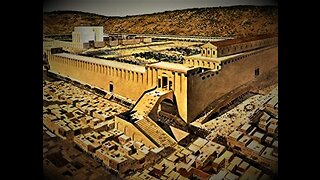 50:43
50:43
BrookeCerda
1 year agoMoscow Is The Real Jerusalem (irrefutable evidence)
1.16K3 -
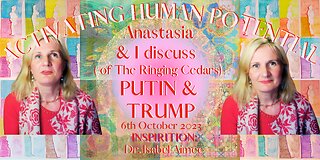 23:12
23:12
The Heavenly Tea
9 months agoAnastasia ( of The Ringing Cedars) & I discuss PUTIN & TRUMP's SOULS
11.2K -
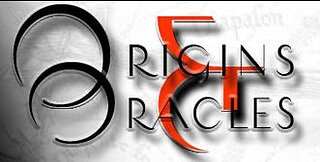 5:31:18
5:31:18
InnerLight
1 year agoOrigins & Oracles: Program 5 - Astro-Theology & Sidereal Mythology (2005)
781 -
 22:03
22:03
Libertarian99
1 year agoMyron C Fagan audio recording from 1967 as he lays out the New World Order back then
1.05K2 -
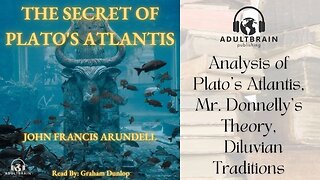 2:06
2:06
AdultBrain Audiobook Publishing. Bringing Rare and Forgotten Books to Audio for the World
1 year agoClip - The Secret of Plato's Atlantis. Lord John Francis Arundell. Analysis of Ignatius Donnelly's
1362 -
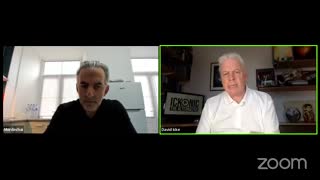 1:19:09
1:19:09
InnerLight
1 year agoMordechai Krispijn in conversation with David Icke - October 21, 2022
8.27K14 -
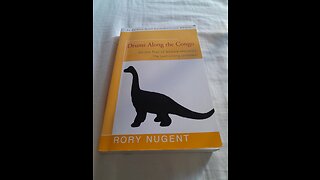 47:58
47:58
BEASTSOFTHEWORLD
1 year agoBeastly Theories (Ep. 84) Drums Along the Congo - with Rory Nugent
81 -
 37:31
37:31
RussianView
1 year ago#2. With What Historical Science is Engaged and How | Mikhail Velichko
36 -
 58:57
58:57
Ancient and Chinese Astrology
7 months agoRefuting Deborah Houlding's Claim That Whole Sign Houses Were Not Used by Ancient Astrologers
110 -
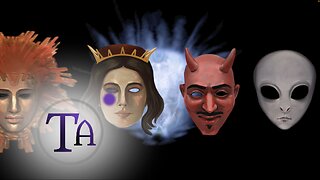 21:39
21:39
Think Anomalous - Science and the Unexplained
1 year agoJacques Vallée, UFOs, and the Case against Extraterrestrial Origins
6871